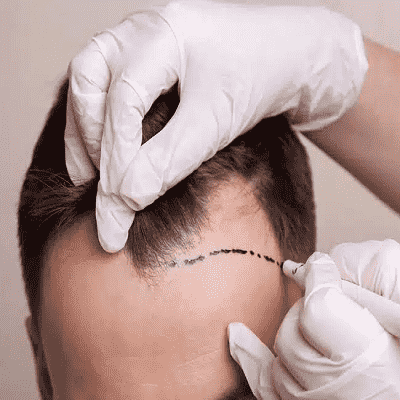Introduction to Hair Transplant Consultations
Before diving into the specifics, it's important to understand the purpose of a hair transplant consultation. This appointment is designed to evaluate your unique hair loss situation, discuss potential treatment options, and determine if you’re a good candidate for a hair transplant. It’s also an opportunity for you to ask questions and learn more about the procedure at the Best Hair Transplant Clinic in Muscat, recovery process, and expected results. The consultation sets the foundation for your hair restoration journey, making it a crucial step toward achieving your aesthetic goals.
1. Initial Assessment and Medical History
The consultation begins with a thorough assessment of your hair and scalp. The specialist will examine the pattern and extent of your hair loss, the density of your donor hair (typically from the back or sides of your head), and the overall health of your scalp. This assessment helps the specialist understand your specific condition and how best to address it.
Your medical history is also a vital part of this discussion. You’ll be asked about any underlying health conditions, medications you’re taking, and previous hair loss treatments you’ve tried. This information is crucial for determining whether you’re a suitable candidate for a hair transplant and if any precautions need to be taken.
2. Discussing Your Hair Restoration Goals
One of the key components of the consultation is discussing your hair restoration goals. The specialist will ask you about your expectations, including how you’d like your hairline to look, the density you desire, and any other specific preferences you have. This conversation helps the specialist tailor the treatment plan to meet your needs and ensures that your goals are realistic based on your hair loss stage and donor hair availability.
3. Understanding the Hair Transplant Procedure
Next, the specialist will explain the hair transplant procedure in detail. They’ll go over the different techniques available, such as Follicular Unit Extraction (FUE) and Follicular Unit Transplantation (FUT), and recommend the best method for your situation. You’ll learn about how the procedure is performed, including the extraction and implantation of hair follicles, the duration of the surgery, and the recovery process.
This is also the time to discuss any potential risks or complications associated with the procedure. While hair transplants are generally safe, it’s important to be aware of possible side effects, such as scarring, infection, or temporary shock loss (where transplanted hair falls out before regrowing).
4. Personalized Treatment Plan
Based on the assessment and your goals, the specialist will create a personalized treatment plan for you. This plan will outline the number of grafts needed, the areas of the scalp to be treated, and the expected timeline for the procedure and recovery. The specialist may also suggest complementary treatments, such as Platelet-Rich Plasma (PRP) therapy or medications like minoxidil, to enhance the results of your transplant.
5. Cost and Financing Options
Cost is a significant consideration for most patients, and your consultation will include a detailed discussion of the financial aspects of your treatment. The specialist will provide a cost estimate based on the number of grafts required and the complexity of the procedure. They’ll also discuss payment options, financing plans, and whether the clinic offers any packages or discounts. Understanding the financial commitment upfront will help you plan accordingly and avoid any surprises later on.
6. Question and Answer Session
A good consultation always includes ample time for you to ask questions. Whether you’re curious about the procedure itself, the recovery process, or the clinic’s experience and success rates, don’t hesitate to voice your concerns. This is your opportunity to clarify any doubts and ensure you’re fully informed before making a decision.
7. Next Steps and Scheduling
After all your questions have been addressed and you feel comfortable with the proposed treatment plan, the final part of the consultation involves discussing the next steps. This may include scheduling the procedure, preparing for pre-operative instructions, and arranging follow-up appointments. The specialist will guide you through the process, ensuring you know what to expect before, during, and after the surgery.
Conclusion
A consultation at a hair transplant clinic is a vital step in your hair restoration journey. It’s a time to assess your current situation, discuss your goals, and learn about the available treatment options. By the end of your consultation, you should feel well-informed and confident about the path forward. Remember, this is your opportunity to ask questions, address any concerns, and make a decision that aligns with your aesthetic goals and lifestyle. With the right information and a personalized treatment plan, you’ll be well on your way to achieving the natural-looking results you desire.





Comments